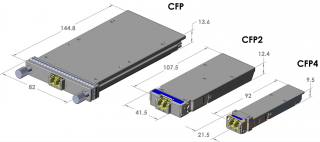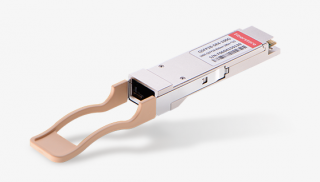Marketing
Transceiver Solutions for 100G Ethernet Network
Nowadays our network has a gluttonous demand for data, which brings a big challenge to Ethernet network. In order to meet the increasing demand for higher and higher data transmission rate, 10G, 40G, 100G and even 120G Ethernet Network are developed to be deployed for our system. Have you ever known how fast the data transmission speed is in 100G Ethernet network? Do you also want to deploy 100G Ethernet network for your system? Then, are you familiar with the transceivers for 100G Ethernet network? In this article, it will mainly introduce some commonly used 100G transceivers that will guide you to select the proper transceiver for your network if you want to make the 100G migration.
100G Transceiver Solutions
100G Ethernet network is a kind of computer networking technology developed for transmitting data at rates of 100 Gbit/s. To meet the increasing requirement of high speed in 100G Ethernet network, a series of 100G transceivers are designed for connecting cabling to the network at the same time. Among these 100G transceivers, CFP, CFP2, CFP4, and QSFP28 are most commonly used 100G transceivers that will be introduced in the following paragraphs.
100G CFP/CFP2/CFP4 Transceiver
CFP is also known as C form-factor pluggable transceiver. The word C represents the Latin letter C which means the number 100 (centum), as CFP module was primarily developed for 100G Ethernet network. It is published after SFP module, but has a higher performance to support the high transmission speed of 100 Gbit/s. As for its application, the electrical connection of a CFP can only use 10 x 10Gbit/s lanes in each direction (RX, TX), while its optical connection can support both 10 x 10 Gbit/s and 4 x 25 Gbit/s variants of 100Gbps interconnects. What should be noted is that 10 Gbit/s signals were far more realizable than 25 Gbit/s signals. As a result, CFP solution to achieve 100Gbps data rate is always working with 10 x 10Gbit/s lanes , which is the first choice for the sake of cost.
CFP has already met the requirement of 100 Gbps high data rate. However, for its big size, it is no longer fulfill the requirement of high-density data center. Take this into consideration, CFP2 and CFP4 are developed successively for higher performance and higher density in data center. As for the size comparison of these three transceivers, we can learn that CFP2 and CFP4 are 1/2 and 1/4 respectively in size of CFP from the following figure.
CFP2 and CFP4 transceivers are hot pluggable form factor transceivers that are designed for optical networking applications. Both of them can accommodate a wide range of power dissipations and applications. But they are greatly different in the following aspect. As for 100G CFP2 transceiver, it is used for interconnecting 100G Ethernet links that can reach 10 km over single mode fiber patch cables. And its interfaces can be various, 4 x 25Gbit/s, 8 x 25Gbit/s, 10 x 10Gbit/s, and 8 x 50Gbit/s. Clearly different from the previous one, 100G CFP4 transceiver is designed for 100 Gigabit Ethernet links with 4 x 25Gbit/s and 4 x 10Gbit/s interfaces.
100G QSFP28 Transceiver
Just like 40G QSFP+ Transceiver, 100G QSFP28 transceiver has also the same size and four channels, while the data transmission speed of its channel is increased from 10 Gbps to 25 Gbps to achieve 100Gbps data rate. As a four channel transceiver, it can transmit and receive 100 Gbps simultaneously. In contrast to other 100G CFP family, QSFP28 has increased the panel density and decreased power consumption which can save cost a lot. For this reason, it is more popular and commonly used for deploying 100G Ethernet network.
Conclusion
The requirements for higher fiber optical technology will never stop, so does the development of Ethernet network. As 100G Ethernet network is more and more widely deployed in today’s data center, more 100G transceiver solutions will be designed to achieve the aim of higher and higher density in data center.
Post je objavljen 17.11.2016. u 10:58 sati.

